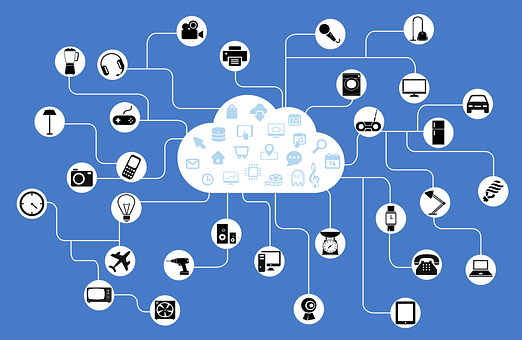Many Areas Of Vulnerability
Business in the 21st century has changed substantially. Though currently only seventeen years have elapsed since Y2K, technological expansion has entirely transformed the environment. Two primary aspects of operations are worthy of consideration in this regard, and they are cloud computing and IoT.
IoT stands for the Internet of Things. If you’re unfamiliar with this new innovation in technology, it basically refers to WiFi enabled devices connected through the cloud. The cloud is basically a network of servers used to surrogate on-site server arrays. In a nutshell: you get the same utility as owned computer systems, but remotely.

Think: rental. You can “rent” server space on the cloud. Additionally, you can “rent” software utility, parse massive amounts of data in real time, and consolidate information from networks of web-enabled devices via IoT. All these things streamline business and solidify operations while curtailing expenses.
But the downside comes in security. It’s very easy to hack into IoT devices. It’s also easy to compromise cloud computing situations. Various tech companies have come up with solutions which include proactive monitoring in order to detect abnormalities in operation that indicate hackers, and antiviral software.
The Human Component
The thing is, there’s nothing which can overcome plain old human tenacity; especially when that tenacity only requires concerted mental effort and no physical difficulty to yield substantial benefit. Hackers are numerous, and it’s estimated that CaaS (Cybercrime as a Service) is a $500 billion-a-year industry.
What this means is that to properly utilize IoT and Cloud computing, you must have some means of protecting your data internally. You must have some hybrid cloud solution which retains proprietary data on-site in case the worst-case scenario should undermine your operations.
To that end, it’s important that you establish a procedure of backup and data recovery, and that there be some solution which is closely guarded under lock and key. It’s not enough to have digital security solutions; once you’ve stored your data, you need physical security solutions to properly safeguard it additionally.
If you want to learn what the average cost of home security systems is, it makes sense to find sites like HomeSecuritySystem.co, which offers a chart of pricing as well as specifying their best choice for a security system: “Clearly, LiveWatch offers the best overall package when it comes to home security.”
You can use such systems in lieu of big-ticket corporate security solutions. Oftentimes that which is most integral to an operation is contained, or can be contained, in one room; or one structure. I.E., you don’t need to secure the entirety of your operations in order to ensure data is safe.
Taking Everything Together And Synthesizing Solutions
But these aren’t the only considerations pertaining to 21st century business. You are additionally going to have the area of transit. Today, businesses can operate entirely remotely. One individual can manage multiple employees that may be located in different cities or even different countries.
Accordingly, you must have systems which can be protected from remote compromise through careless users. This is a difficult balance to strike, because productivity predicates some level of available access.
The key, again, seems to revolve around retaining core data separate from surrounding systems—essentially, you want to take a cue from government intelligence agencies and use compartmentalization techniques.
Think of it like the queen bee as separate from her worker bees, or the queen ant residing in the core of the anthill. You want your primary data not to be accessible to hostile forces like viruses, malware, spyware, etcetera. Certainly this is easier said than done, but a combination of BDR solutions and physical security is key.
